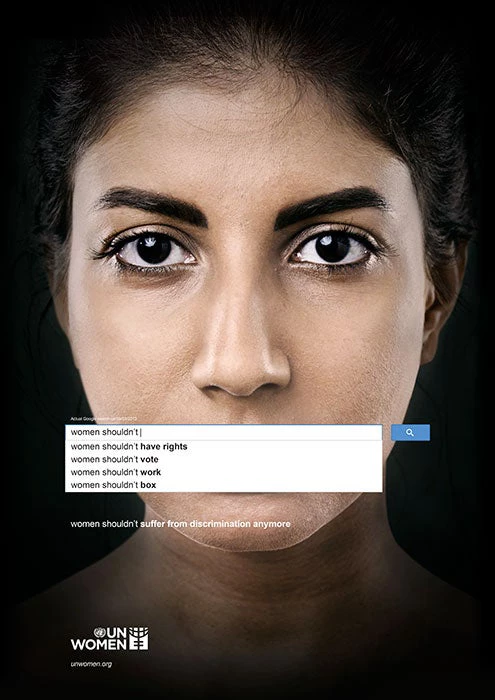Women: Just when you thought it was safe to leave the kitchen, drive, vote, or wear pants, think again. Try Googling “Women should not,” and watch what the autocomplete function brings up. Top responses include “be allowed to vote,” “be in combat,” and “be in church.” This glimpse of the deep and pervasive sexism in our collective conscious inspired a UN ad campaign featuring women’s faces with their mouths covered in these slurs.
These disturbing messages did not emerge out of nowhere. They reflect social norms, and their rigid persistence reminds us that norms change slowly, when they change at all. According to the World Health Organization, at least 35% of the world’s women have been assaulted at some point, and many men and boys have also been victimized, particularly when their behavior goes against dominant norms.
It is easy to think that norms have changed when we see people doing things that have not traditionally been done. We see women wearing pants, voting, attending school, and riding public transport in many of the countries where we work. We see men taking on roles that have traditionally been seen as “feminine,” such as caring for children. It is easy to forget that there is a critical space between the moment when behaviors like this are seen as “something that people do,” and when they are enshrined into norms.
We have gotten quite good at nudging people, especially women, into that space. We build schools; we connect people through technology and transport; we build health centers that increase access of marginalized groups to services, and so much more. A few brave individuals step into the space. But sometimes we forget that this space is a dangerous place for women, and also for men who do not conform to dominant norms. A microcredit program targeted at women may increase their income and autonomy, but it can also disrupt power dynamics at home and in the community, putting them at risk of violence. A new highway can connect women to income-generating opportunities in a public marketplace, but also put them at risk of harassment and sexual assault. What are we doing to mitigate these risks in our operations? And beyond our projects, what are we doing to reduce and prevent violence more broadly?
With this in mind, our team in the Social Development unit reviewed the experience of the World Bank in responding to sexual and gender-based violence. We found 38 projects active in 2008 or later addressing the issue in some way, for an estimated $22.5 million investment. If that number seems big, consider that $17 million of it is dedicated to one loan (in Honduras), leaving the average per-project investment at only about $200,000. Most of this investment comes from trust funds, consists of analytical work, and is focused on geographical areas where the violence is so intense it cannot be ignored, such as the Democratic Republic of the Congo or Haiti.
That said, we are putting more attention – and more money – into addressing this critical development concern. Since 2012, 12 new projects addressing sexual and gender-based violence have been approved and six new development policy loans have been initiated that support policy reforms on sexual and gender-based violence in some way.
There is so much more we can do. Our report will be available following a discussion on Nov. 13 from 12:30-2 p.m., at World Bank headquarters, room MC C2-131, with a panel discussion about what we have done, what we have learned, and what more we can do. Visitors from outside the Bank may contact Joyce Chinsen for access at jchinsen@worldbank.org or connect to the panel via webcast here.



Join the Conversation